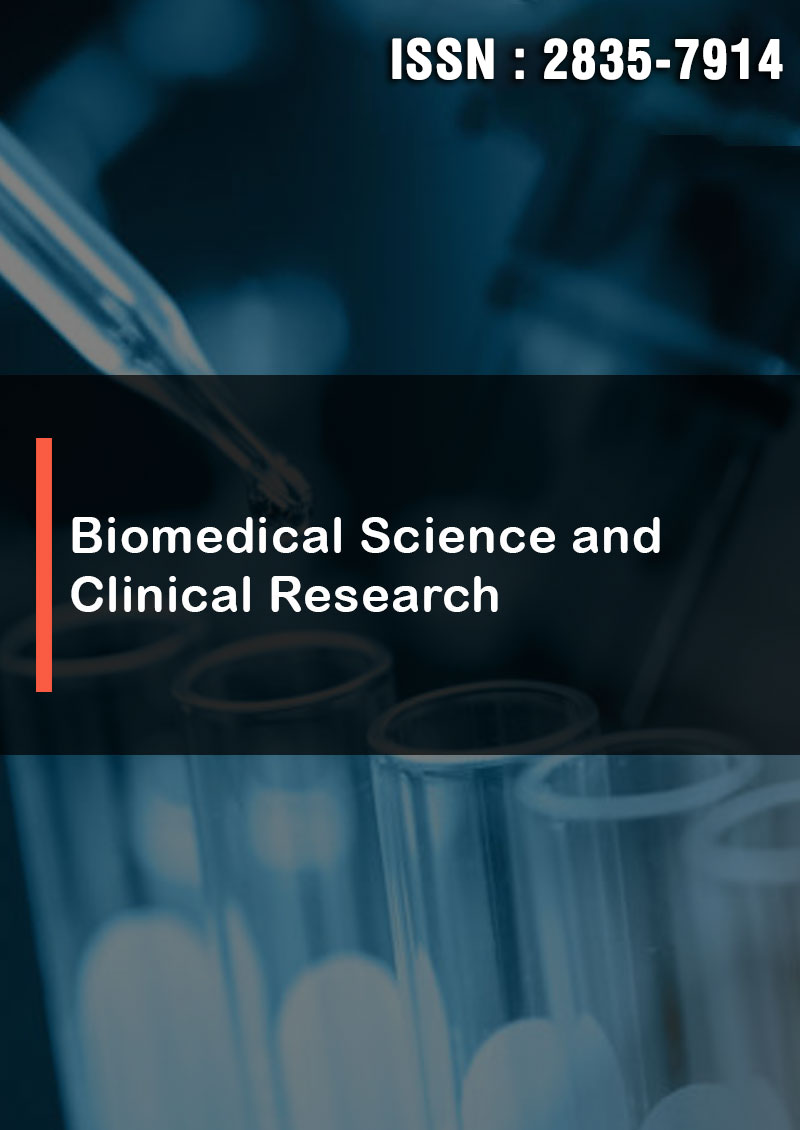Evaluation of Aqueous Methanol Stem Bark Extract of Stereospermum kunthianum (Pink Jacaranda) for Analgesic and Anti-Inflammatory Effects in Alloxan-Induced Diabetic Rats
Abstract
Chekwube N. Ifeadi, Florence C. Nwinyi, Julius O. Ode, Suleiman B. Ramon-Yusuf and Jonas A. Onah
The stem bark extract of Stereospermum kunthianum (Family: Bignoniaceae) also known as pink jacaranda is used in traditional medicine to treat rheumatic arthritis, other inflammatory and pain-related health conditions in humans. The aim of this study was to evaluate the analgesic and anti-inflammatory properties of the stem bark extract of S. kunthianum (Pink Jacaranda) in alloxan-induced diabetic rats for the purpose of drug research and development. The study is also aimed at finding an alternative treatment using medicinal plants to arrest pain and inflammation which are associated with delayed wound healing common in diabetic patients. The stem bark was successively macerated in 80% v/v methanol to obtain the extract. The aqueous-methanol extract of S. kunthianum was analysed for various phytochemical constituents. The aqueous- methanol stem bark extract of the plant was evaluated for 72 h for its acute toxicity in rats. Diabetes was induced in the healthy adult Wistar albino rats by injecting alloxan at a dose of 115mg/kg body weight. The aqueous-methanolic extracts of Stereospermum kunthianum was administered at doses of 100, 200, 400mg/kg body weight intraperitoneally. The aqueous- methanol extract of the stem bark was also investigated for anti-inflammatory effect in the diabetic rats using fresh egg albumin-induced paw oedema. The analgesic effect of the extract at the doses of 100, 200 and 400 mg/kg was tested against acetic acid-induced nociception and formalin-induced pain in diabetic rats. The results revealed that saponins, terpenes, tannins and steroids were present in the extract. Its acute toxicity profile was determined in the diabetic rats. In the acute toxicity studies, there was no observed toxicity sign up to the dose up to 5000 mg/kg p.o. The estimated oral median lethal dose (LD50) of the extract was ≥ 5,000 mg/kg. The stem bark extract of Stereospermum kunthianum (100, 200 or 400 mg/kg, i.p.) caused a reduction of paw oedema in the diabetic-induced rats over a period of 120 min (2 h). However, the extract at all the test doses (100, 200, 400 mg/kg i.p.) caused a significant (p<0.05) reduction of inflammation only at 60 min observation period in comparison with the control group (distilled water: 10 ml/kg, i.p.) The effect of the extract was most pronounced at the dose of 100 mg/kg, i.p. and was higher at 80 min and 120 min than that of acetyl salicylic acid (50 mg/kg, i.p.). The percent inflammatory inhibition for the extract was not dose-dependent and was comparable to that of acetyl salicylic acid (ASA, 50 mg/kg i.p.). Acetic acid-induced writhing test for anti-nociception showed that S. kunthianum stem bark extract (100, 200, 400 mg/kg, i.p.) significantly (p <0.05) reduced the number of acetic acid-induced writhes in diabetic rats for 180 min in a time-dependent manner and the reduction was not dose-dependent. The extract at a dose of 200 mg/kg had higher percent inhibition of nociception than that produced by doses of 100 and 400 mg/kg of the stem bark extract. Acetylsalicylic acid (ASA, 50 mg/kg, i.p.) maintained a steady analgesic effect > 80% from the onset (30 min) to termination of the study (180 min) post pain induction in the diabetic rats. At 90, 120 and 180 min, 200 mg/kg, i.p. stem bark extract of S. kunthianum displayed an almost equipotential analgesic effect comparable to ASA (50 mg/kg, i.p.) in the diabetic rats. In the formalin- induced pain test in the diabetic rats, the S. kunthianum extract (100, 200 mg/kg, i.p.) had minimal analgesic potency at both doses in the early phase compared to acetylsalicylic acid (ASA, 50 mg/kg, i.p.) with a high analgesic potency in early phase. The highest dose of stem bark extract (400 mg/kg, i.p.) produced non-significant pain inhibition in the early phase (0 –15 min). Anti-nociceptive study also revealed that S. kunthianum (100, 200 and 400 mg/kg, i.p.) caused a significant (p <0.05) reduction of formalin-induced pain at the late phase (30-45 min) with ASA having a minimal analgesic effect compared to the test doses. The doses of the stem bark extract of S. kunthianum (100, 200, 400 mg/kg, i.p.) had weak analgesic effects in both phases of formalin-induced pain model. This suggests that the analgesic effect of the stem bark extract of S. kunthianum involves both neurogenic (centrally) and inflammatory (peripheral) mechanism. The findings of the study indicate that the aqueous extract of Stereospermum kunthianum stem bark possesses anti-inflammatory activity which is probably related to the inhibition of prostaglandin synthesis. The paw edema, acetic-acid writhing and formalin findings showed that the stem bark extract of Stereospermum kunthianum possess significant anti-nociceptive and anti-inflammatory effects. These findings justify the folkloric use of the stem bark extract of S. kunthianum in ethnomedicine for the management of various painful and inflammatory conditions.



